Why are daddy long legs called that?
What are the symptoms of a daddy long legs bite?
Do Daddy Long Leg spiders make webs?
Why are daddy long legs called that?
When people run into the creepy crawlies, the name daddy long-legs is used but this name can refer to at least three different animals.
The name daddy long-legs came about because of their small oval body and long legs, however, it’s still a great mystery where the “daddy” part of the nickname came from. To this day no one is quite sure where it all started.
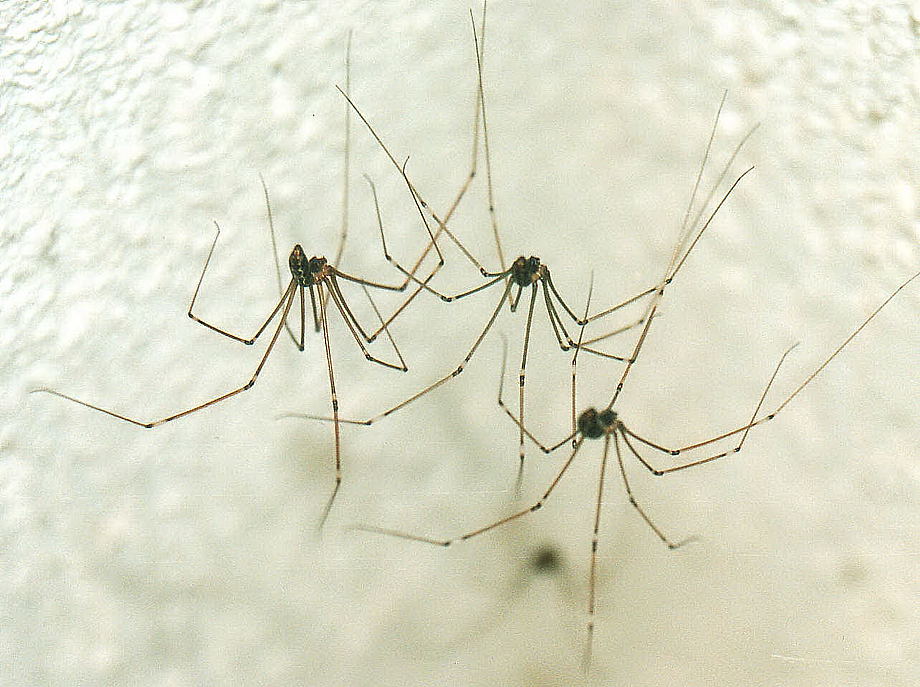
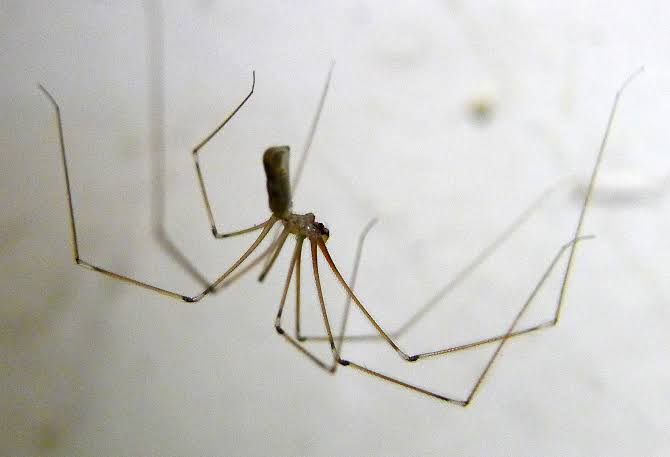
The creature most correctly called daddy long-legs are harvestmen. These are not “true spiders” and have only one basic body segment with all eight legs attached, and at most two eyes. They can be found in damp areas under rocks and logs. They don’t make silk, so you’d never see one in a web — unless a different spider was eating them. Since they are typically found under rocks and such, most people actually don’t see them.
Another critter often called daddy long-legs is a true spider referred to as cellar spiders in the family Pholcidae. This is a true spider with two body segments, and eight eyes, and makes webs with silk. This is most likely the animal you call daddy long-legs when you see them. Since they are most commonly found in cellars, hence their name.
What are the symptoms of a daddy long legs bite?
The Diet of the Daddy-Long-Legs Spiders
Apart from eating another poisonous spider (redback spider Latrodectus hasselti), Daddy-long-legs spiders also eat:
Wolf spiders
Huntsman spiders
False widows
House spiders
Hobo spiders
Moths
Flies
Mites
Mosquitos
Crane flies
Spider eggs
Daddy-long-legs spiders are seen making webs near these prey, which are also common in Perth.
Do Daddy Long Leg spiders make webs?
Unlike spiders, Daddy Longlegs don’t spin webs because they do not produce silk. Daddy Long Legs actually have only two eyes unlike spiders who have eight. Another difference is that Daddy Longlegs are not venomous. They do not have fangs or venom glands.
It has been a big question over if Daddy Long legs are poisonous. What are Daddy Longlegs anyway? Daddy Longlegs are actually considered Arachnids, not spiders. Daddy Longlegs also go by the name Harvestman. These Arachnids have some spider-like qualities which is why people often make that mistake. Unlike spiders, Daddy Longlegs don’t spin webs because they do not produce silk. Daddy Long Legs actually have only two eyes unlike spiders who have eight. Another difference is that Daddy Longlegs are not venomous. They do not have fangs or venom glands. They have to protect themselves in other ways.
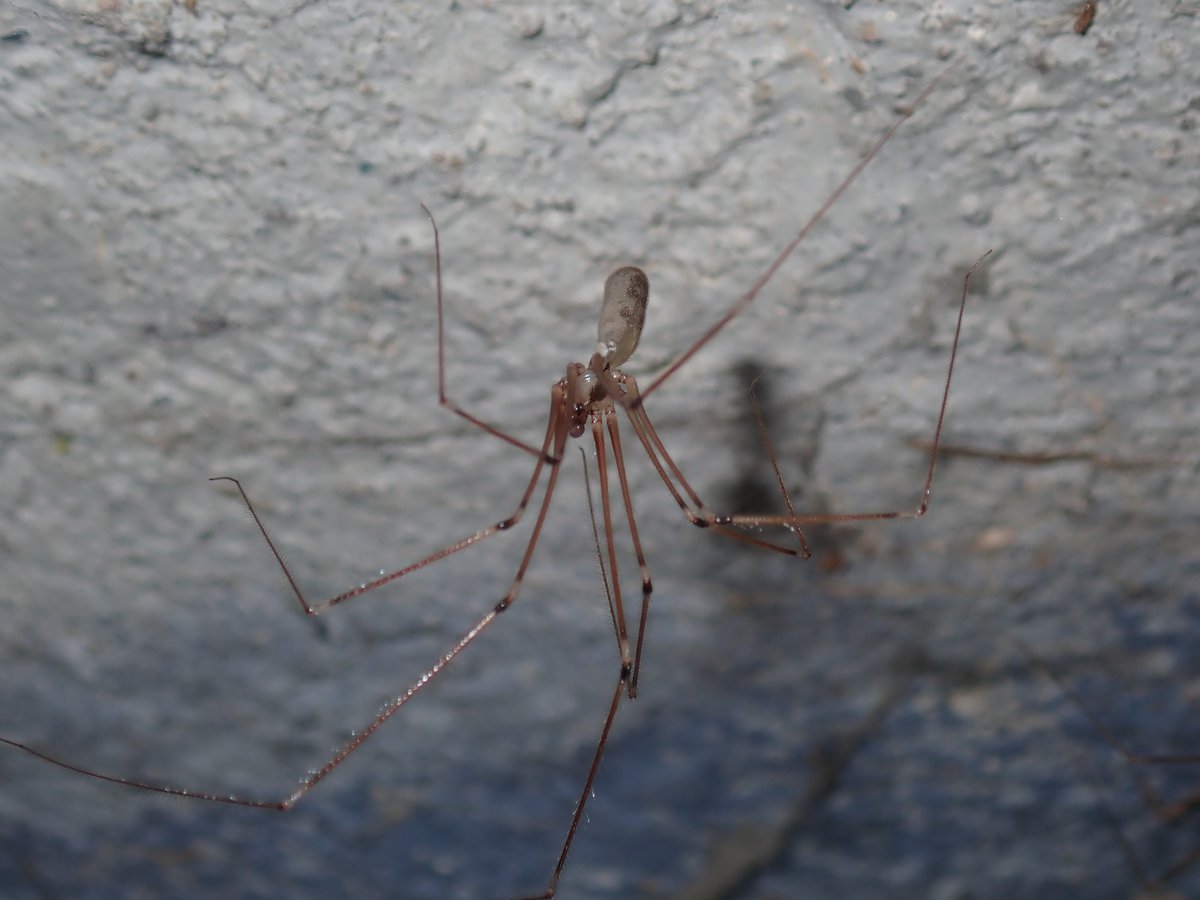
Have Defensive Stink Glands
Daddy Longlegs have defensive stink glands that emit a foul smell that predators despise. This Arachnid also can camouflage extremely well with its surroundings. In the daytime Daddy Longlegs often hide cracks and crevices. If they are disturbed or threatened Daddy Longlegs will curl up in a ball and pretend to be dead. They will remain motionless for a few minutes before getting back up again. This tactic works extremely well.
If someone does get a hold of the one of Daddy Long Legs legs it could shed its own leg off. If the Arachnid is already full grown a new leg will not grow in the place of the leg. If it is still in the nymph stage a new leg might grow back but it’s not always going to happen. The legs are actually the most important part because they are the nerve centers of the Daddy Longlegs. Their legs have the ability to sense vibrations, tastes, and smells.
Tiny Red Bugs Habits іn thе Hоmе
A common misconception about Daddy Longlegs is that they are the most dangerous venom out of all the spiders. This statement is completely wrong. Daddy longlegs are harmless and won’t hurt humans in any way.
Three Types of Daddy Longlegs
There are actually three types of Daddy Longlegs. The first kind is the Harvestman which is the most common type. The second kind is called the crane fly. The Crane Fly is part of the Diptera order and it is also considered a true fly. This fly has six legs compared to Harvestman which has eight. It also has wings and looks like a bigger version of the mosquito. The crane fly does not harm humans. The last group of Daddy Long Legs are called Pholcidaes. The Pholcidaes are actually spiders and they do have venom glands. These spiders are better known as Cellar Spiders, They are found across the United States and on the Pacific Coast. Even though cellar spiders have venom glands there are no incidents showing that their venom can harm humans. If you do end up getting bit by one of these Cellar spiders you will have nothing more than a short burning sensation. It is nowhere as deadly as the black widow spider so you have nothing to worry about.
Daddy long legs spider – Pholcus phalangioides
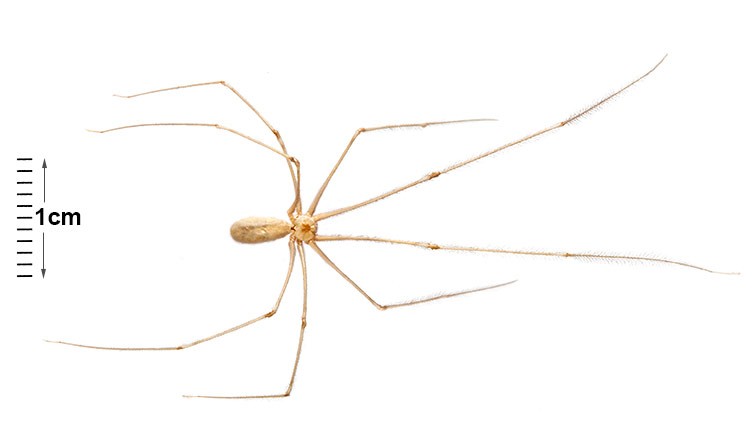
Overall size: up to 45mm
Season: all year round
A large spider, but with a very small greyish body and long thin legs. They prefer the warm and constant temperatures of our homes, garages and sheds, and are rarely found outdoors as they cannot survive winter temperatures.
Webs are untidy without great design, often made in ceiling corners. If disturbed they vibrate in their webs, which is probably a way to frighten predators. They feed on any insects found in homes and will also take other spiders, including surprisingly large house spiders (Tegenaria species).
This species is not native to the UK, and may have been introduced through trade. It has become more widely distributed over the last 30 years.
Have you heard this one?
”Daddy-Longlegs are one of the most poisonous spiders, but their fangs are too short to bite humans”
This tale has been lurking around for years. I have heard it repeatedly in the United States and even heard a schoolteacher misinforming her class at a museum in Brisbane, Australia. This is incorrect, but to clarify it, several points need to be explained first.
Definitions
One area of confusion is with the terms “venomous” and “poisonous” which are not interchangeable.
”Venomous” means an organism has specific glands for the production of venom, ducts to convey the venom through hardened structures (fangs, sting) for hypodermic introduction into a target organism. However, “venomous” is an anatomical description and does not necessarily imply universal effect. There are many venomous animals whose venom works on their insect prey but are harmless to humans.
Similarly, “poisonous” is an anatomical description of an organism which produces a compound in a gland that is usually transferred by contact or ingestion. Poison oak causes dermal injury in humans but deer readily eat the plant so “poisonous” does not imply universal effect. Chemicals can also be poisonous.
The correct term for having a negative effect on a target organism is “toxic”. Cobras are venomous because they have venom which can have a negative effect on some mammals such as humans so the effect in humans is toxic. But a mongoose considers cobras to be lunch because they are immune to the venom.
The animals
Most folks who retell this tale have no idea that they are referring to two completely separate groups of animals: “daddy-longlegs” and “daddy-longlegs spiders”. In the animal class Arachnida, there are several lower level divisions called Orders. Scorpions are in the Order Scorpiones, spiders are in the Order Araneae, ticks and mites are in the Order Acari.
The creatures most correctly called daddy-longlegs are in their own separate Order which is Opiliones. Common names for this Order are 1) daddy-longlegs, 2) harvestmen and 3) opilionids. They are characterized by having one basic body segment which shows segmentation on the posterior portion, at most 2 eyes and all 8 legs attach to the pill-like body segment. They are usually found under logs and rocks, prefer moist habitat although they can be found in the desert, often have long flexible legs (in the temperate Northern hemisphere but there are also short-legged daddy-longlegs). They do not produce silk so therefore they are never found in webs unless they are being eaten by spiders. Because they are found under logs and other stuff which people most often are not turning over, most folks don’t run into daddy-longlegs very often.
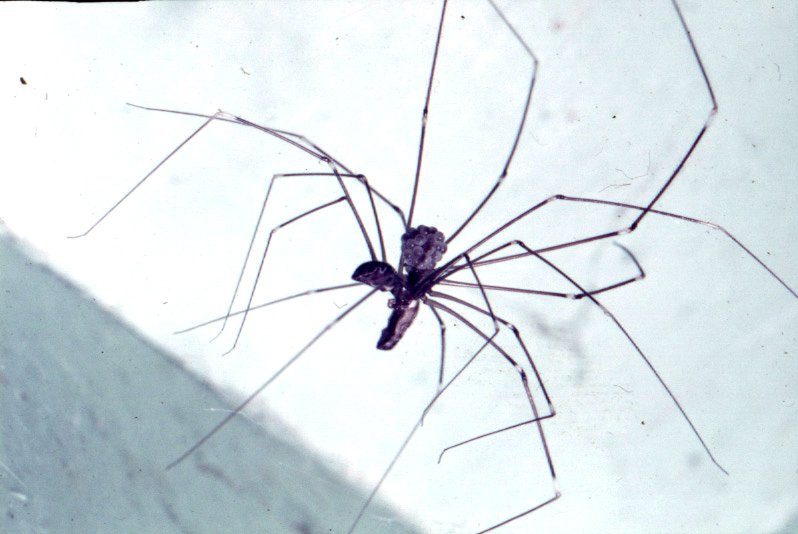
Another creature often called daddy-longlegs is actually a spider. These long-legged spiders are in the family Pholcidae. Previously the common name of this family was the cellar spiders but arachnologists have also given them the moniker of “daddy-longlegs spiders” because of the confusion generated by the general public. Because these arachnids are spiders, they have 2 body basic body parts (cephalothorax and abdomen), have 8 eyes most often clumped together in the front of the body, the abdomen shows no evidence of segmentation, have 8 legs all attached to the front most body part (the cephalothorax) and make webs out of silk. This is most probably the animal to which people refer when they tell the tale because these spiders are plentiful especially in cellars (hence their common name) and are commonly seen by the general public. The most common pholcid spiders found in U.S. homes are both European immigrants. Pholcus phalangioides is a uniformly grey spider with rectangular, elongate abdomen and is found throughout the U.S. Holocnemus pluchei also has a rectangular, elongate abdomen but has a brown stripe on the ventral side (the belly side – which is typically directed upwards since the spider hangs upside down in its web) which covers its sternum and is a stripe on the abdomen. These spiders are very common along the Pacific Coast. and into the southwest deserts.
Possible envenomation
Is there any truth to this oft-repeated tale?
Daddy-longlegs (Opiliones) – these arachnids make their living by eating decomposing vegetative and animal matter although are opportunist predators if they can get away with it. They do not have venom glands, fangs or any other mechanism for chemically subduing their food. Therefore, they do not have injectable toxins. Some have defensive secretions that might be toxic to small animals if ingested. So, for these daddy-long-legs, the tale is clearly false.
Daddy-longlegs spiders (Pholcidae) – Here, the myth is incorrect at least in making claims that have no basis in known facts. There is no reference to any pholcid spider biting a human and causing any detrimental reaction. If these spiders were indeed deadly but couldn’t bite humans, then the only way we would know that they are toxic is by milking them and injecting the venom into humans. For a variety of reasons including Amnesty International and a humanitarian code of ethics, this research has never been done. Furthermore, there are no toxicological studies testing the lethality of pholcid venom on any mammalian system (this is usually done with mice). Therefore, no information is available on the likely toxic effects of their venom in humans, so the part of the myth about their being especially dangerous is just that: a myth. There is no scientific basis for the supposition that they are deadly and there is no reason to assume that it is true.
What about their fangs being too short to penetrate human skin? Pholcids do indeed have short fangs, which in arachnological terms is called “uncate” because they have a secondary tooth which meets the fang like the way the two grabbing parts of a pair of tongs come together. Brown recluse spiders similarly have uncate fang structure and they obviously are able to bite humans. There may be a difference in the musculature that houses the fang such that recluses have stronger muscles for penetration because they are hunting spiders needing to subdue wandering prey whereas pholcid spiders are able to wrap their prey and don’t need as strong a musculature. So, again, the myth states as fact something about which there is no scientific basis.
In summary
For true daddy-long-legs, the opilionids, the myth is certainly false, and for the daddy-long-legs spiders it is certainly not based on known facts.
The cosmopolitan Daddy-long-legs Spider belongs to a group known as the tangle-web spiders.
What do Daddy-long-legs Spiders look like?
Identification
Daddy-long-legs spiders are easily recognised by their extremely long, skinny legs and small body. Pholcus phalangioides has a brown patch on its pale carapace and a cream to pale brown, lightly patterned abdomen. Some related species have different colour patterns, for instance, the Marbled Cellar Spider (Holocnemus pluchei) has a strongly patterned abdomen with a dark stripe on the underside.
Where do Daddy-long-legs Spiders live?
Habitat
Daddy-long-legs Spiders are found in most urban areas, in particular houses. They make a thin, tangled web in sheltered positions were they are unlikely to be disturbed, such as under furniture, behind doors, in the corner of the ceilings, in sheds, in garages and under decks.
Its successful use of these human-made structures has made it one of the most common spiders in Australia. If the Daddy-long-legs Spider is disturbed in the web it responds by setting up a very fast, vibratory motion, becoming a blur to anyone watching.
Distribution
The Daddy-long-legs Spider, Pholcus phalangioides, is found throughout Australia. It is a cosmopolitan species that originates from Europe and was introduced accidentally into Australia. Several other introduced species and about 60 described native pholcids also occur here, the latter usually in natural environments.
What do Daddy-long-legs Spiders eat?
Feeding and diet
The Daddy-long-legs Spider feeds on insects and other spiders.
Are Daddy-long-legs Spiders dangerous?
Danger to humans
There is a persistent belief that the Daddy-long-legs Spider has the most toxic venom of all spiders. However, there is no scientific evidence to back this up. The myth probably grew from observations that the Daddy-long-legs Spider will kill and eat a Redback Spider. However, the venom is not actually that potent, even for insects.
It had been thought that the fangs of this spider were incapable of piercing human skin. Recently, however, it was shown that the tiny fangs (about 0.25 mm) were actually capable of piercing human skin in a test done on the US television show, Mythbusters, but the stinging sensation produced was very short-lived. Most reputable sources, including the University of California, Riverside, still say that this species would never be considered as harmful to humans.
However, in the unlikely event of a bite from this species, a positive identification of the spider by an expert should be made and medical attention sought if any reaction persists for more than a short time.
Are Daddy Long Legs Spiders Poisonous?
Are daddy long legs spiders (Pholcus phalangioides) poisonous? That is a question that many people ask, especially since this Europe-found species is also in Perth. In addition, Daddy-long-leg spiders look different from the other spiders commonly found in the city. Their distinct appearance with spindly legs makes people wonder if they are dangerous. Let’s find out the answer below and see what first aid treatment may be done if they bite..
Daddy Long Legs Spiders Have the Most Toxic Venom
Yes, you read it right. Daddy long legs spiders have the most toxic venom among all spiders. They are more venomous than all the spiders found in Perth, in the country, and worldwide. Daddy long legs spiders were observed to kill and eat Redback Spiders, one of the most venomous spiders in the world. Aside from eating other spiders and insects by catching them in their web or actively hunting for them.
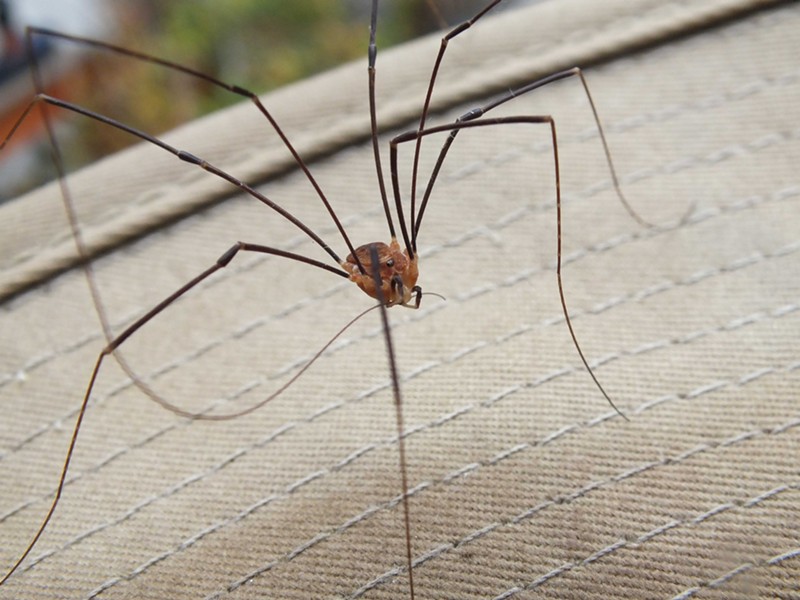
The Diet of the Daddy-Long-Legs Spiders
Apart from eating another poisonous spider (redback spider Latrodectus hasselti), Daddy-long-legs spiders also eat:
Wolf spiders
Huntsman spiders
False widows
House spiders
Hobo spiders
Moths
Flies
Mites
Mosquitos
Crane flies
Spider eggs
Daddy-long-legs spiders are seen making webs near these prey, which are also common in Perth.
Habitat of Daddy Long Legs Spiders
According to the Australian Museum, Daddy-long-leg spiders are mostly found inside houses. They make their webs and produce egg sacs in areas where they may not be disturbed like:
Under furniture.
Behind doors.
Corner of the ceilings.
In sheds.
In garages.
Under decks.
Usage of these typical areas of the house makes daddy long legs spiders very common in Perth. In addition, this also makes them more prone to having human encounters.
The Danger of Daddy Long Legs Spiders to Humans
There were multiple studies made to test how dangerous Daddy long legs spiders maybe when they bite humans. One of them is by Mythbusters , an American scientific television show, wherein it was found out that their tiny fangs of about 0.25 mm were able to pierce human skin. The conclusion was derived after Adam Savage put his arm in a tank of daddy-long legs and only got a small bite.
However, their bite only caused a very mild, short-lived burning sensation. Other resources, like the Spider Research of the University of California, Riverside, also claim that the spider venom of daddy-long legs spiders is not considered harmful to humans.
Myth on Daddy-Long-Legs Spiders
Since daddy long legs spiders eat a poisonous spider, they were believed to have stronger venom than the redback spider, and potentially have the most toxic venom. However, this is not supported by any scientific evidence. In fact, in one of Life Science‘s articles, it was mentioned that a scientist did a test on the effect of Daddy-long-legs spider bite. The scientist only had a little black mark for a day or two which eventually disappeared.
So the same scientist said that the bite of Daddy long leg spiders is not a big deal, and they are not the most toxic spiders in the world. The same scientist highlighted that he was referring to daddy-long-legs spiders, as the term “Daddy-long-legs” is a common name for three different animals: harvestmen (opilionids, a group of arachnids that include scorpions), crane flies, and pholcid spiders. So, the study refers to pholcid venom which is found to be not as dangerous.
Other researchers state that daddy long-legs venom is less toxic than the venom of other species such as funnel-web, black widow spiders, and brown recluse spiders (found in North America).
Animals that are Called Daddy-long-legs
The name Daddy-long-legs is not only for spiders. It is also used to call two other animals. It is important to differentiate them from each other as only one of them is a true spider.
Cellar Spider
The Daddy-long-legs spider we are talking about is also called the cellar spider, which belongs to the family Pholcidae. Like the general body structure of others, cellar spiders also have:
Two body segments.
Eight eyes and fangs.
Venom ducts.
Venom glands.
Cellar spiders’ very long legs make them distinct from other spiders found in Perth. Their skinny legs are typically several times as long as their small bodies.
Harvestmen
Also called Daddy-long-legs, harvestmen are arachnids in the Order Opiliones which have:
A single body segment.
Only two eyes.
They don’t have fangs or venom glands but they have poison that works by being ingested or through topical contact. This is released when they are disturbed by spraying it to the predators and parasites killing spiders and insects.
Crane Flies
Crane flies are also considered to be Daddy long legs due to their long bodies and wings. They belong to the Family Tipulidae and may seem like oversized mosquitoes, but they don’t bite. It’s because they don’t have any mouthparts at all. Therefore, these Daddy long legs are not poisonous.
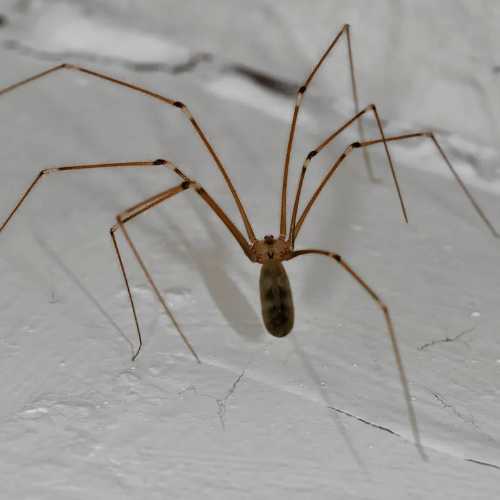
First Aid for Daddy Long Legs Spider Bite
As mentioned above, Daddy Long Legs spiders are not considered poisonous. Spiders Australia categorises them as low-risk and non-aggressive. Their fangs are very small but may still pierce human skin. Therefore, knowing certain first aid practices after they bite may be helpful to treat the possible effects of their bites. The general spider bite first aid includes the following steps:
Cleaning the wound
Applying cool compress
Elevating the affected area
Taking a pain reliever, antihistamine, or antibiotics if needed
After doing the above first aid steps, it is advised to observe the bitten area. Because there may be a need to perform additional first aid treatment which may be learned from a first aid course in 123C Colin St West Perth 6005 . A Daddy-Long-Legs spider bite may cause an infection, further signs, and symptoms, or allergic reaction such as anaphylaxis. The last one may be life-threatening especially if first aid response is not applied immediately.
Knowing what an Anaphylaxis Is
According to Britannica, Anaphylaxis is a severe, immediate, and possibly deadly systemic allergic reaction. This is caused by exposure to a foreign substance that a person has become sensitized to, one of them may be the venom of a Daddy-Long-Legs spider.
Signs and Symptoms of Anaphylaxis
The signs and symptoms of Anaphylaxis may occur minutes to hours after being bitten by a Daddy-Long-Legs spider which includes:
Hives
Itching
Flushed or pale skin
Low blood pressure
Swollen tongue or throat that may lead to wheezing or difficulty in breathing
Weak and rapid pulse
Nausea
Vomiting
Diarrhoea
Dizziness
Fainting
Applying the anaphylaxis first aid is advised once any of these occur.
First Aid Treatment for Anaphylaxis
A person who is experiencing Anaphylaxis should be injected with epinephrine immediately. It may be done using an automatic injection device, such as an EpiPen. Correct usage of this medical device and knowledge about appropriate dosage is essential in responding to Anaphylaxis. Therefore, administration of epinephrine is advised to be done by healthcare professionals or trained first aiders .
Being a Trained First Aider
First aiders are known to provide immediate assistance to persons experiencing sickness, injuries, or illnesses to prevent further harm and save someone’s life. They are trained and may also hold a valid first aid certificate. Having a trained first aider in the family may be essential especially if there are sick, old, or disabled members in the household.
In addition, a workplace first aider is also required in working stations where the risk level is high. To be a trained first aider, you may check if there are accredited first aid course providers in your area. In Perth, first aid training is available at 123C Colin St West Perth 6005 where enrollment in qualification and non-qualification first aid courses may be done.
Conclusion
Daddy-Long-Legs Spiders are poisonous, and their bite may cause a burning sensation. However, the effect of their bites does not last long and their venom is not harmful to humans. The myth of Daddy-Long-Legs spiders carrying the most toxic venom among all spiders came from observations of it eating redback spiders, one of the most venomous spiders in the world. Both spiders are found in Perth, so knowledge about the first aid treatment for their bites may be important to know.
